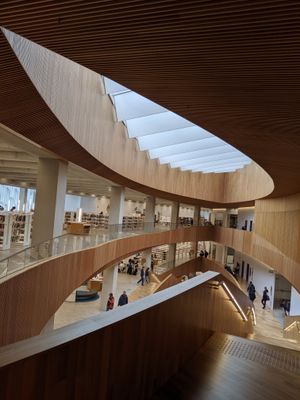Fiona MacCarthy has a very nice article in today’s Guardian about Colin St John Wilson and the building which was to become his life’s work.
Perhaps only an intellectual modernist such as Wilson could have tackled the architectural challenges inherent in designing the largest public building in Britain in the 20th century. The British Library is almost certainly the last great public building of such scale and seriousness that we shall ever see. Most great public buildings have their share of problems, and the British Library’s epic history of setbacks is well known. As governments changed – from Harold Wilson through to Margaret Thatcher – policies altered and funding was cut back. The site was moved from Bloomsbury to Euston Road. Detailed plans for the building had to be amended in the light of the constantly evolving, complex new technologies of the “information age”. For the architect himself, the commission that had seemed something of a national honour was transformed into the endurance test he used to refer to as his “30 years’ war”. ……
His first ambition would have been to build a great cathedral, but a library came second. He retained a childlike vision of a “magic mountain of all the knowledge in the world”.
…… Is this a factory or is it a temple? A library needs to be a bit of both. The approach from Euston Road through the temple-like main portico across the piazza with its little built-in amphitheatre focuses the mind. Wilson’s ideal libraries were always places redolent of intellectual continuity, alive with “the buzz of scholars of the past”, and the walk across the courtyard evokes a corresponding buzz of previous architects:…..
[A house for the mind | Art & Architecture | guardian.co.uk Arts]
Related entries:



